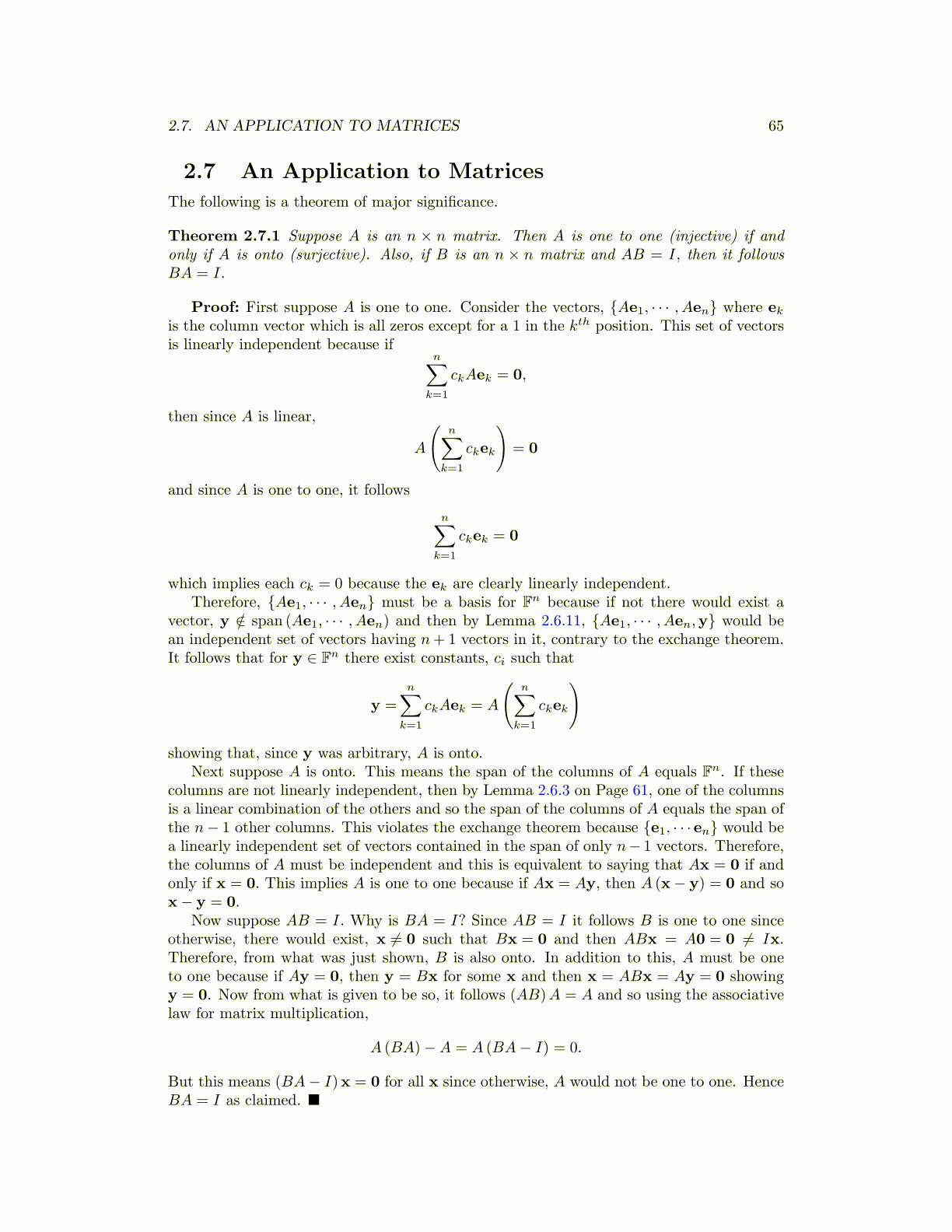
2.7. AN APPLICATION TO MATRICES 65
2.7 An Application to Matrices
The following is a theorem of major significance.
Theorem 2.7.1 Suppose A is an n × n matrix. Then A is one to one (injective) if andonly if A is onto (surjective). Also, if B is an n × n matrix and AB = I, then it followsBA = I.
Proof: First suppose A is one to one. Consider the vectors, {Ae1, · · · , Aen} where ekis the column vector which is all zeros except for a 1 in the kth position. This set of vectorsis linearly independent because if
n∑k=1
ckAek = 0,
then since A is linear,
A
(n∑
k=1
ckek
)= 0
and since A is one to one, it follows
n∑k=1
ckek = 0
which implies each ck = 0 because the ek are clearly linearly independent.Therefore, {Ae1, · · · , Aen} must be a basis for Fn because if not there would exist a
vector, y /∈ span (Ae1, · · · , Aen) and then by Lemma 2.6.11, {Ae1, · · · , Aen,y} would bean independent set of vectors having n+ 1 vectors in it, contrary to the exchange theorem.It follows that for y ∈ Fn there exist constants, ci such that
y =
n∑k=1
ckAek = A
(n∑
k=1
ckek
)
showing that, since y was arbitrary, A is onto.Next suppose A is onto. This means the span of the columns of A equals Fn. If these
columns are not linearly independent, then by Lemma 2.6.3 on Page 61, one of the columnsis a linear combination of the others and so the span of the columns of A equals the span ofthe n− 1 other columns. This violates the exchange theorem because {e1, · · · en} would bea linearly independent set of vectors contained in the span of only n− 1 vectors. Therefore,the columns of A must be independent and this is equivalent to saying that Ax = 0 if andonly if x = 0. This implies A is one to one because if Ax = Ay, then A (x− y) = 0 and sox− y = 0.
Now suppose AB = I. Why is BA = I? Since AB = I it follows B is one to one sinceotherwise, there would exist, x ̸= 0 such that Bx = 0 and then ABx = A0 = 0 ̸= Ix.Therefore, from what was just shown, B is also onto. In addition to this, A must be oneto one because if Ay = 0, then y = Bx for some x and then x = ABx = Ay = 0 showingy = 0. Now from what is given to be so, it follows (AB)A = A and so using the associativelaw for matrix multiplication,
A (BA)−A = A (BA− I) = 0.
But this means (BA− I)x = 0 for all x since otherwise, A would not be one to one. HenceBA = I as claimed. ■